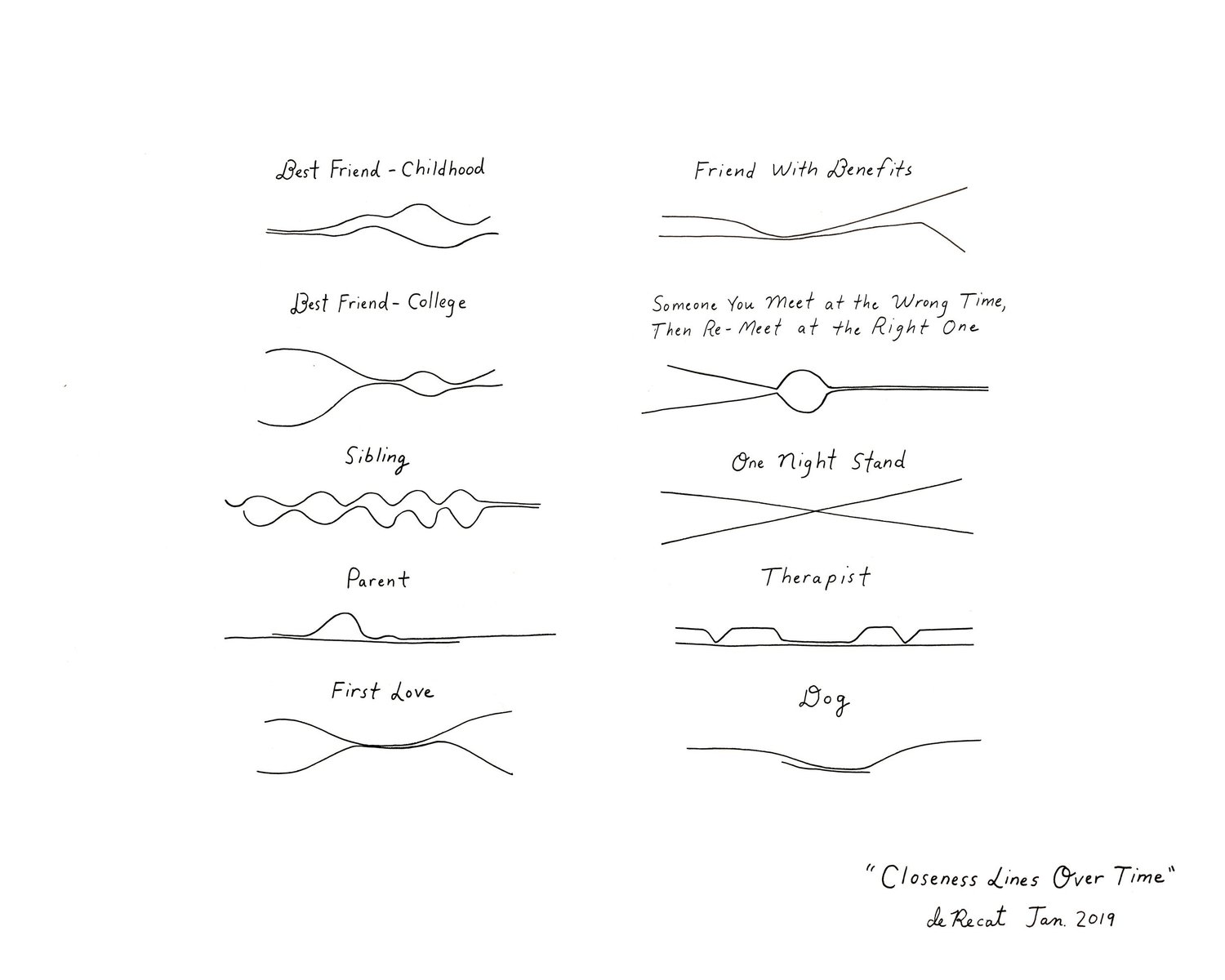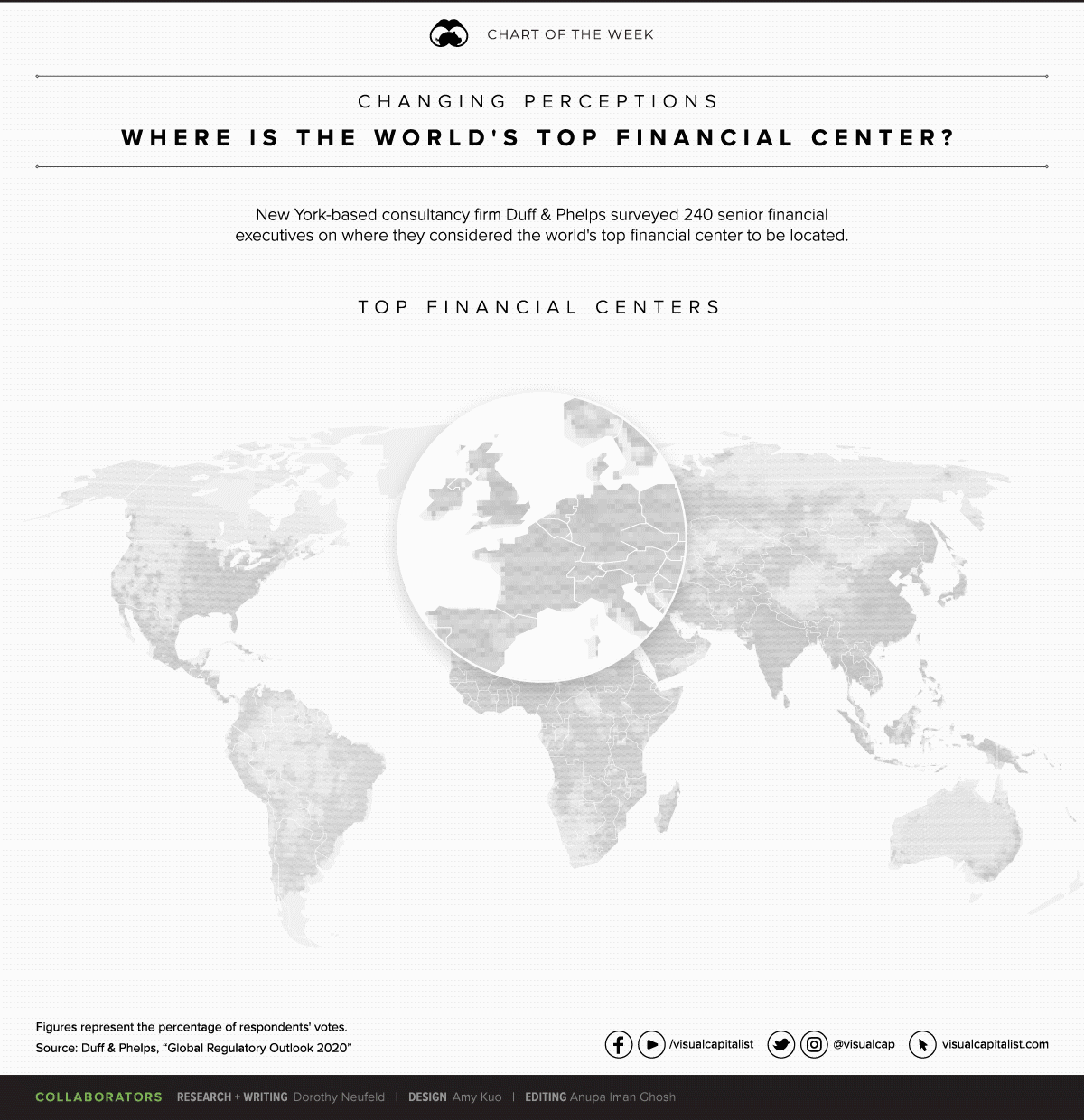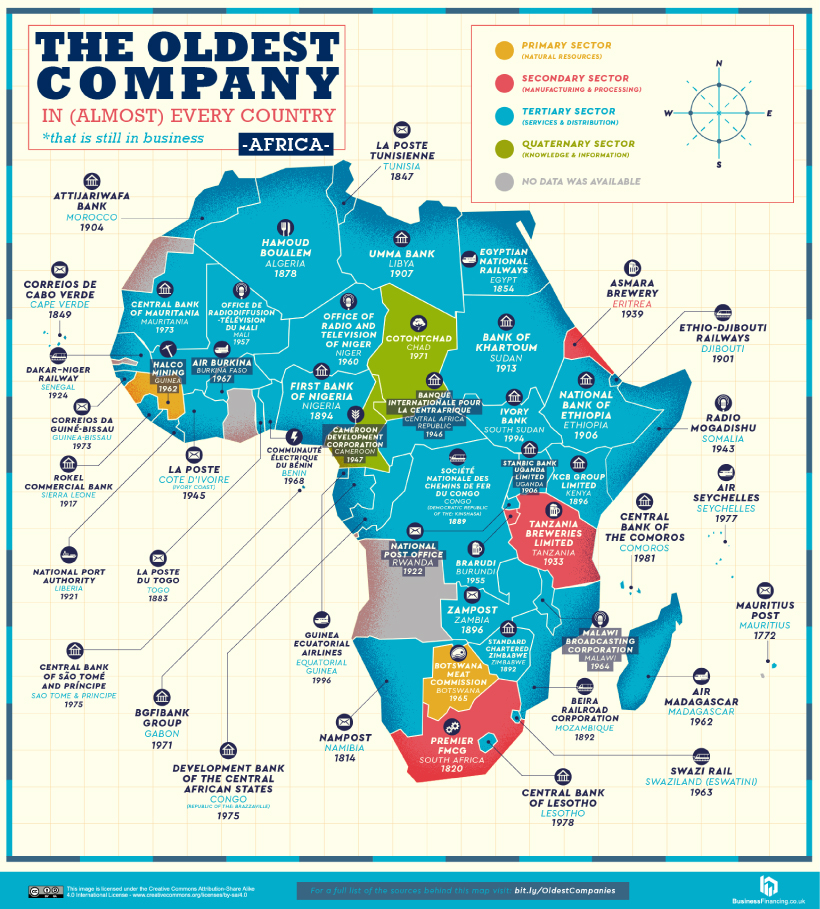(This Week) Relationships, Little Ideas & Sense-Making
01 March 2020
Welcome back to the Week That Was series where I highlight a few things from the interwebs which I thought were interesting, noteworthy and probably worth your time. Usually a couple of links spanning an article📝, tweet(s)📱, video🎥, graphs 📈 and/or any other media with some commentary, summaries or callouts for context.
Might be from 2020 or 1920 BCE - so long as it’s useful/interesting/insightful.
🖼️ Closeness Lines
Olivia de Recat is a cartoonist and writer living in Los Angeles, whose work often appears in the New Yorker and other publications. Her sketch charting how the closeness of relationships evolves over time rings pretty true.

🌐 Global Financial Centres
Quick animation using Duff & Phelps data showing changes in percetption regarding the location of the world’s top financial centre

💬🔮 Future Sense-making
“History is that certainty produced at the point where the imperfections of memory meet the inadequacies of documentation.” - Julian Barnes
I thought this was quite a powerful quote, which applies broadly not just at a socio-historical level but even in our own individual lives. It was mentioned by Patrick McCray in response to a Nils Gilman question asked on Twitter about sense-making in posterity.
Deep thought: Will all the crazy things happening in the present one day make sense?
— Nils Gilman (@nils_gilman) February 24, 2020
I enjoyed a couple of other responses on the thread over and above the Julian Barnes quote:
“The narrative that emerges about our present will be shaped by the needs of the future for anchorage in its past. It doesn’t belong to us and we have no use for it. We are making the present” - @lodyrdota
and
“Some say that wisdom consists of looking forward from the present as if looking back on the present” - @stewartbrand
🧒🏾👧🏻📈Are The Kids Alright?
Globally it’s become clear that early childhood (particularly among young girls) access to social media is correlated with increases in depression and teenage suicide - both in developed and developing nations.
A potentially less morbid and fascinating aspect of Gen Z however is how they are turning their backs on many of the classic teenage vices from cigarettes to alcohol. Video games (and social media) appear to be picking up the slack.

One Reddit user put it brilliantly:
Fortnite: the anti-weed, anti-sex, anti-TV, anti-alcohol, anti-smoking solution parents have been seeking for decades
💡📝 100 Little Ideas
The Pareto Principle a.k.a the 80/20 Rule a.k.a The Law of the Vital Few a.k.a The Principle of Factor Sparcity - suggests that for many events a majority of the effects (say 80%) come from a minority of the causes (say 20%). This holds across a vast menagerie of phenomena - including mental models, frameworks and ideas. Relatively few ideas and models tend to do the majority of the heavy lifting in helping to explain how the world works.
Morgan Housel of the Collaborative Fund collates 100 ideas which he feels are a big part of that 20%. The post is definitely worth perusing.
A couple of examples:
Curse of Knowledge: The inability to communicate your ideas because you wrongly assume others have the necessary background to understand what you’re talking about.
Historical Wisdom: “The dead outnumber the living 14 to 1, and we ignore the accumulated experience of such a huge majority of mankind at our peril.” – Niall Ferguson
Hedonic Treadmill: Expectations rise with results, so nothing feels as good as you’d imagine for as long as you’d expect.
Peter Principle: Good workers will continue to be promoted until they end up in a role they’re bad at.
Non-Ergodic: When group probabilities don’t apply to singular events. If 100 people play Russian Roulette once, the odds of dying might be, say, 10%. But if one person plays Russian Roulette 100 times, the odds are dying are practically 100%.
Hanlon’s Razor: “Never attribute to malice that which can be adequately explained by stupidity.”
The 90-9-1 Rule: In social media networks, 90% of users just read content, 9% of users contribute a little content, and 1% of users contribute almost all the content. Gives a false impression of what ideas are popular or “average.”
Many many more on his post.
Incidentally I also put together a mental model collection some time ago.
🏢👔 Corporate Speak
Sometimes you run into articles you want to hug. This is one of those articles - especially if you’ve been in a corporate environment and had your eyes glaze over as you were accosted by yet another “I should have the bandwidth - let me block out a touchbase on my cal, and we’ll figure out how to operationalise this”

Garbage Language Why do corporations speak the way they do?
🧮🤓 Euler

Allow your inner geek to appreciate the beauty of this formula - even if it’s meaning may be completely lost on you. Just know this miraculous little identity by one of mankind’s brightest ever minds binds 5 important numbers together:
- 0
- 1
- π = circle’s circumference/diameter ≈3.14159
- e = ZAR1 after 1 year of continuous compounding with 100% interest ≈2.71828
- i = square root of -1
Interesting explainer deep-dive vid from YT SuperMathGeekHero 3Blue1Brown
🌍💼 Oh…and one more thing
Visual Capitalist put together a map showing all of the oldest companies in the world here. Here are the oldest going concerns on the African continent.

Thanks for reading. Tune in next week
Links The Week That Was Pickings
fa17eab @ 2023-09-18